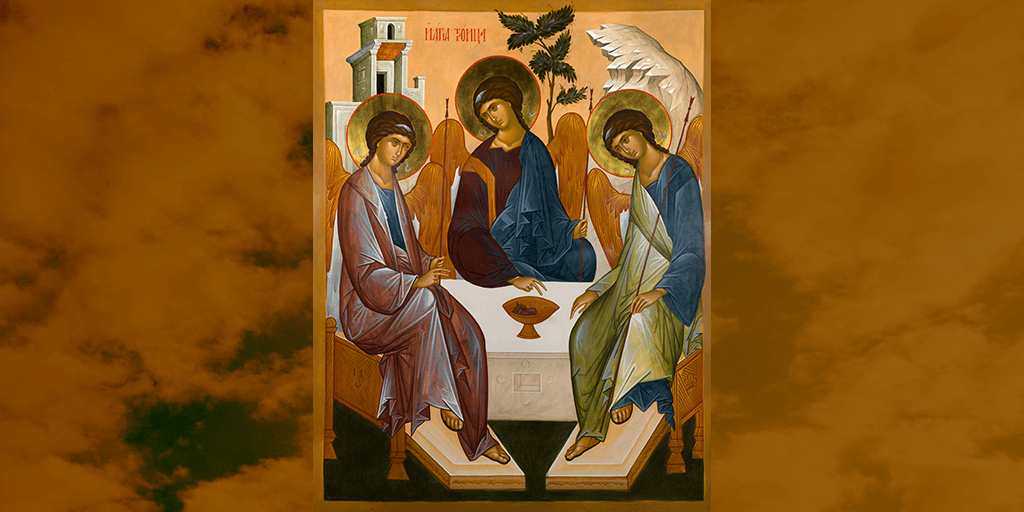THEOLOGICAL DICTIONARY Anthropology Genesis 1-3 A Study of Theology II – Part 3 (Dr. Thomas Figart) We have already discussed the creation of angels on the first day of creation week, and how some fell from their holy estate to follow after Satan. Vegetation (including trees) was created on the third day, followed by flying creatures and sea creatures on the fifth day. On the sixth day, both land animals and humans were created. A Study of Theology II – Part 3 Dr. Thomas Figart
Anthropology: The Study of Man
Introduction: In the beginning, God created three kinds of life on earth: Sitting under a tree are a boy and his dog. The tree has
bodily life; it grows to maturity with leaves and branches which wave in the wind, with
motion. The dog also grows, exhibits motions of various kinds, but in addition, the dog has a
soul with the ability to express
emotion. The English word “
animal” is from the Latin word
anima which means “
soul” and refers to forms of animal life, including human souls. The boy grows, eventually becoming a man, and like the tree and the dog, is capable of many kinds of motion and emotion, but in addition, he has a
spirit, with the possibility to express
devotion to God. We have already discussed the creation of angels on the first day of creation week, and how some fell from their holy estate to follow after Satan. Vegetation (including trees) was created on the third day, followed by flying creatures and sea creatures on the fifth day. On the sixth day, both land animals and humans were created. On his chart dealing with creation, Dr. John C. Whitcomb lists the following five biblical evidences for 24-hour creation days:
- Hebrew word for “day” (yom) modified by numerical adjective in each creation day;
- “Evening and morning” indicates daily rotation of earth (Dan. 8:26);
- Clear analogy with Israel’s weekly cycle of work and rest (Ex. 20:11);
- “Days” contrast with “years” (Gen. 1:14) as unchanging astronomic time units;
- “Day” must be literal in 2 Peter 3:8 or contrast between God and man is obscured.
- Paul said: “I pray God your whole spirit and soul and body be preserve blameless unto the coming of our Lord Jesus Christ” (I Thessalonians 5:23; see also Hebrews 4:12).
- In Genesis 1:24 When God created the beasts and creeping things the Hebrew words nephesh hayah “living soul” are used, yet they are never said to have spirits, and were given as food after the Fall (Acts 10:9-15). In Genesis 2:7 these same Hebrew words are used of man when “God breathed into his nostrils the breath of life and man became a living soul.” The point here is that beasts were given dichotomous life, whereas man is not only given this type of life; he is trichotomous, having both soul and spirit.
- Christ became a real human being with a true human body, soul and spirit. In Matthew 26:38, in the Garden of Gethsemane, Jesus said: “My soul is exceedingly sorrowful, even unto death.” He could not have said this if He was referring to any aspect of deity, since deity does not change; but real human life can cease (even if only for three days in the case of His death), Then, in Matthew 27:50: “Jesus, when he had cried again with a loud voice, yielded up the spirit.” Likewise, in John 19:30: “When Jesus therefore had received the vinegar, he said, It is finished; and he bowed his head, and gave up the spirit.” Once more, He could not be referring to any part of His deity, since deity never changes. Luke confirms that it was the human spirit of Jesus: “And when Jesus had cried with a loud voice, he said, Father, into thy hands I commend my spirit, and, having said this, he gave up the spirit.”
- Conclusion: The human soul must refer to the “breath of life” in the physical sense. While our souls live, we retain the emotions, feelings; conscience; such things that belong to our lives. When we die, our spirits are in the hands of God, we being absent from the body and present with the Lord awaiting the first resurrection and rewards. The spirits of the non Christians go immediately to Sheol (hell) awaiting the second resurrection, and final judgment.
- There is no proof for this theory, and Scripture is ignored.
- Genesis 2:7 affirms that God created man out of dust “and breathed into his nostrils the breath of life and man became a living soul.”
- Genesis 1:24 says the same thing for all living creatures with regard to soul life.
- The theory that God creates a perfect spirit which becomes depraved when united to a depraved body is not found in Scripture.
- The theory that a dormant sin nature is activated at birth is not found in Scripture.
- Since neither of these ideas are scriptural, the Traducian theory, that the sin nature is inherited from Adam, will be shown by Scripture. The two preceding theories would make God the author of the sin nature instead of Adam. God does not create nor activate fallen souls.




Leave a comment